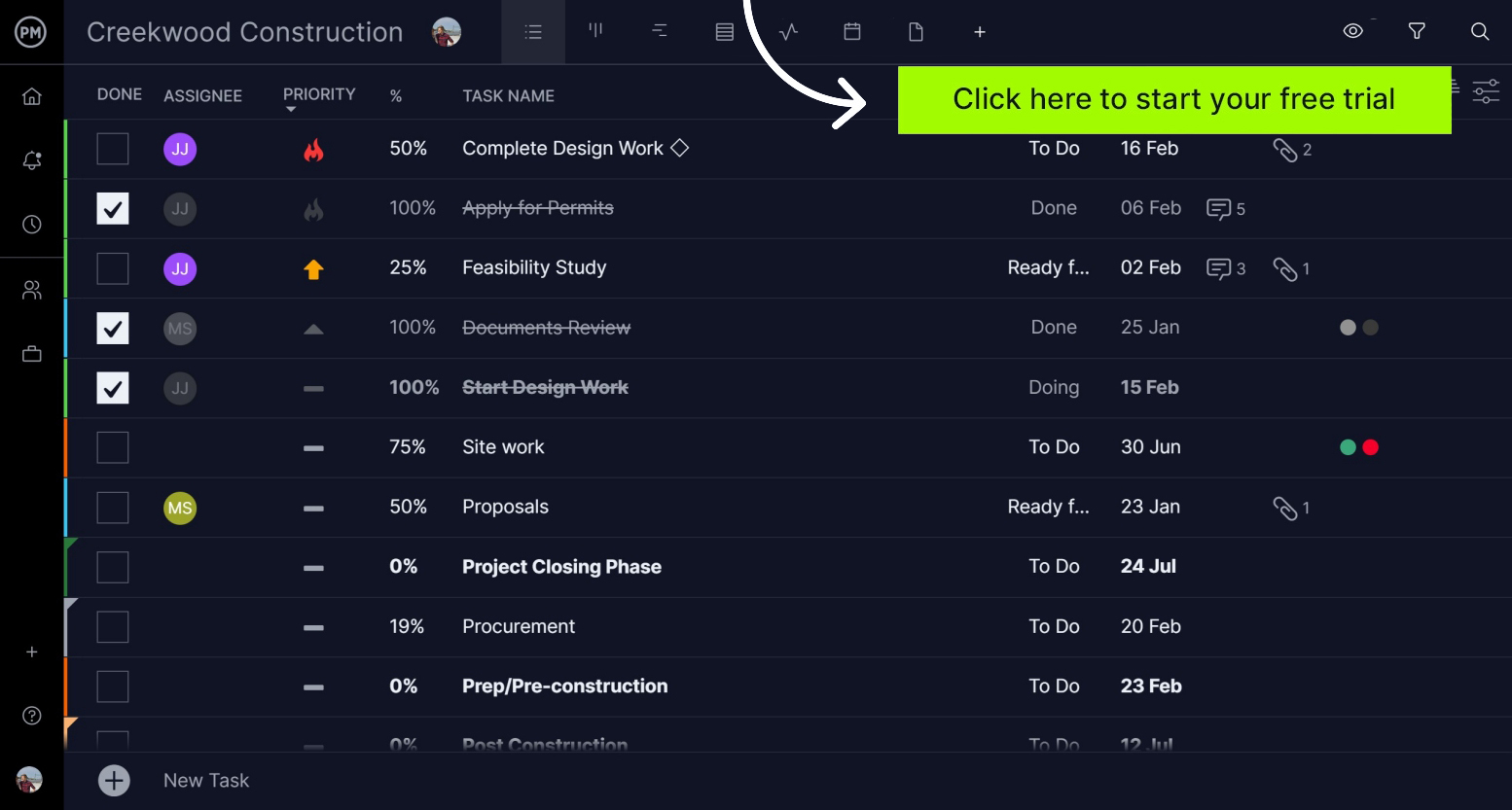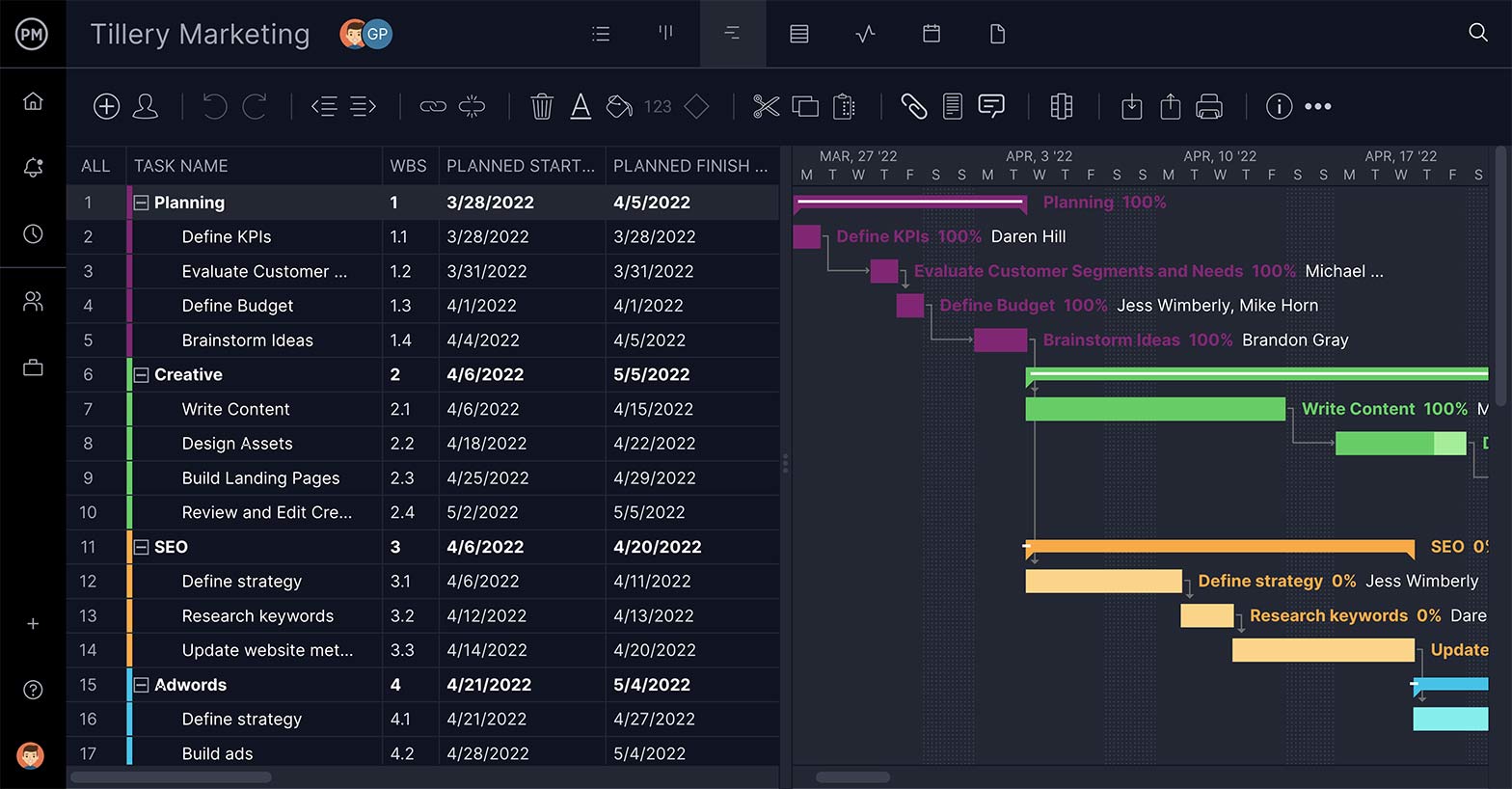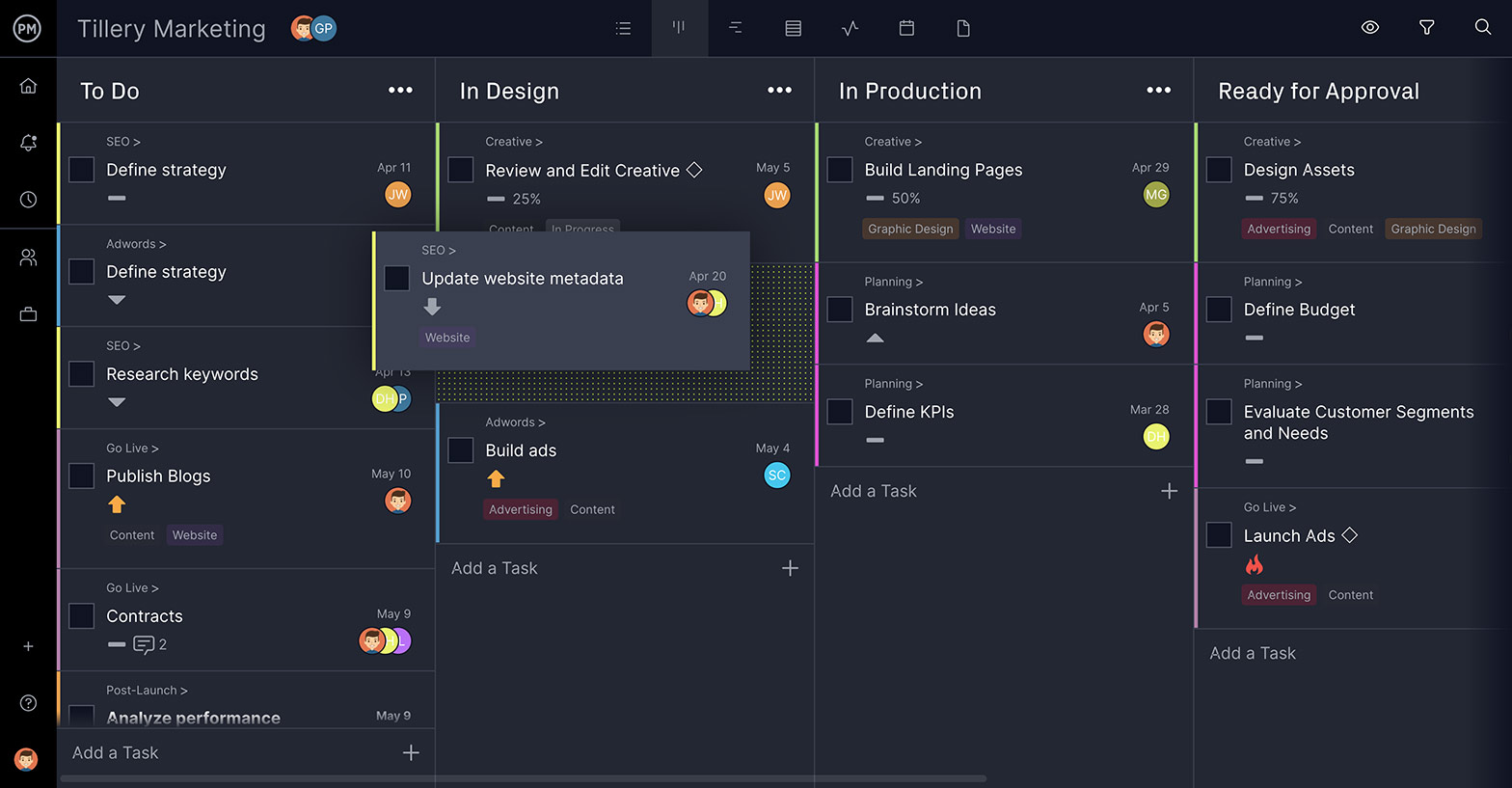Marketing planning doesn’t get the respect that it’s due. No matter how great the product or service, it will wither on the vine and die if no one knows about it. That’s where marketing comes in. But marketing doesn’t just happen: You’ll need to create a marketing plan. You might even say it’s like a project because it is. And any project manager can tell you that without a marketing plan, a project is aimless and destined for failure.
All businesses need a marketing plan to succeed. Yet so many businesses think they don’t have the time or money to invest in one. When funds get tight, it’s usually the marketing budget that suffers the cuts. This is unfortunate because a marketing plan it’s what can return a business to profitability.
If you’re looking to get the most out of your marketing strategies, then take the time to learn how to create a marketing plan for your business.
What Is a Marketing Plan?
A marketing plan consists of all the strategies that a company will execute to reach its marketing goals over a period of time. Marketing plans usually outline marketing activities on a monthly, quarterly or annual basis.
Therefore, the first thing to know about a marketing plan, as any project manager will tell you, is to do the research. A plan is not created in a vacuum. It must have context. For one thing, there are likely to have been similar marketing efforts in the past. These can provide valuable historic data to guide your new plan.
Project management software can help you make a marketing plan more effectively. ProjectManager is software with multiple project views to help you plan, schedule and track your marketing plan. To get started, list all your marketing activities, due dates, assignees and more on the list view. Once you’ve organized your marketing plan, you can view it as a Gantt chart to allocate resources and share it as a kanban board for your marketing team to execute their work. All views are updated in real time to keep everyone working better together. Get started with ProjectManager today for free.

Elements of a Marketing Plan
Some examples of marketing strategies that can be part of a marketing plan are online advertising, email marketing, content marketing, social media management, events, etc. Marketing plans vary greatly but they all share these basic elements:
- Executive Summary: Summarizes the content of your marketing plan. It’s also used for business cases and project proposals.
- Marketing Goals: Define the goals that your marketing plan will achieve, and how those align with the strategic goals of your business plan.
- Key Performance Indicators (KPI): Every marketing strategy needs key performance indicators you can use to measure its success.
- Brand Strategy: Here you’ll need to define important aspects of your brand’s strategy such as your value proposition, marketing mix and growth strategy.
- Market Research: Market research is critical for the success of your marketing plan. You’ll need to define what’s the total addressable market for your product, what’s your market share and what’s your target market. Additionally, you need to conduct a competitive analysis to identify your competitors and how to outperform them.
- SWOT Analysis: This analysis allows you to do an assessment of your strengths and weaknesses and how those relate to the opportunities and threats of your market.
- Marketing team: Assemble a marketing team to achieve your goals.
- Marketing Budget: Create a marketing budget to manage the resources and costs associated with each marketing activity. You can use our free marketing budget template to get started.
- Marketing Strategies: Some marketing plans may require several marketing strategies that are executed simultaneously. Here you’ll want to describe all the marketing activities that you’ll execute, such as your content marketing plan, social media marketing, search engine optimization, email marketing, and other marketing channels.
Structure & Approval Process
The marketing plan is also part of a larger business plan. The marketing plan, however, is mostly concerned with advertising and marketing efforts related to the overall strategy of the organization and specifically its marketing goals.
There is a formal structure to most plans and a marketing plan is no different. It will contain historic data, predictions for the future and marketing activities to reach the goals set by the plan. As noted, the first step is to identify a customer need to target and then devise how to exploit that for profit.
The marketing department of an organization is responsible for the making of a marketing plan, which will have to be approved by the executive in charge of that department before being presented to their superiors.
How to Create a Marketing Plan
When making a strategic marketing plan it’s helpful to seek the help of the experts within your marketing team. Marketing managers are responsible for planning big and small projects and their expertise is helpful to guide a marketing plan. The emphasis here is on the plan, which regardless of the industry, shares a common marketing plan template.
Here are 7 steps to creating a marketing plan.
1. Identify Stakeholders
In project management, the stakeholders are like the clients or customers. When creating a marketing plan, your stakeholders are the executives you are reporting to in your organization. They’re the ones who are the reason for the marketing plan. Think of this as the market research part of the plan. You want to identify the stakeholders within your organization, so you can tailor a marketing plan to meet their requirements and achieve the marketing goals of the company.
Assemble Your Team
Any plan must be executed and that’s where the team comes in. You need to ensure that your marketing team members have the skills that you require to get the job done. For example, you’ll need digital marketing experts if you intend to execute a content marketing plan that involves social media marketing, paid advertising, search engine optimization and blog posting.
2. Create a Communication Plan
Project managers, like marketers, understand the importance of effective communications. The project manager is not only managing their team and making sure the project is on course, they also have to communicate the project’s progress to the stakeholders and directions to the marketing team. How this is done and with what frequency is decided in your communication plan. You can easily make your own with this communication plan template.
3. Create Task List
Every marketing campaign is made up of smaller projects, called marketing strategies or marketing activities. For example, if your marketing goal is to increase sales by 10 percent, then you’d put that on top of a work breakdown structure, which allows you to break down the marketing activities that build up to it.
This is how you define the marketing efforts that your plan must take in order to achieve your marketing goals. These tasks can be collected into what project managers call milestones, which are phases of the project. Once done, these marketing activities are prioritized.
4. Make a Schedule for your Marketing Plan
Once you have a thorough list of all the marketing activities and their priority, you can set them up on a project timeline, with start dates and end dates. The schedule is the backbone of any marketing plan and requires a lot of thinking through to make sure you give everything the time it needs to get done while remaining on a timetable that suits the business plan.
5. Generate a Risk Management Plan
Marketing projects, no matter how well they’re planned, never go as intended. There are risks inherent in everything we do, but with so much at stake in your marketing plan, you’ll need to think about what could go wrong and then have a risk management plan in place to resolve it if and when it does.
6. Monitoring and Reporting
Each marketing activity is tied to a deliverable, whether that’s typography for a print ad, casting a commercial or printing direct mail. You’ll want to track those deliverables as you move through the marketing plan to make sure they’re staying within budget and on schedule. This is best done with thorough reporting that can track various project metrics to measure your progress. It also helps to have good reporting when presenting to your stakeholders.
Marketing Plan Example
The best way to explain how to create a marketing plan is an example. Let’s create a marketing plan for a small business. Here’s the marketing plan outline for an email campaign for company XYZ.
XYZ Marketing Plan
Brand Strategy
- Value Proposition: Increase sign-ups by 20 percent.
- Marketing Mix: Email 75 percent, 10 percent paid online ads and 15 percent banner ads on our website.
- Growth Strategy: Click-through rate of 50, free trial 25 percent and 20 percent sign-ups.
Marketing Goals
- Increase revenue by 10 percent for the quarter.
- Key Performance Indicators (KPI): Click-through rate, sign-ups.
Market Research
- Total Addressable Market: Customer base and those who engage on our LinkedIn group and other communities that would benefit from our product.
- Market Share: Only 25 percent, room to grow.
- Target Market: Mid-level executives.
- Buyer Personas: Management, mid-level executive in the financial division of a company.
- Competitive Analysis: Niche is wide open as competition targets leadership.
SWOT Analysis
- Strengths and weaknesses are internal factors. Strengths are the capabilities that allow the company to compete such as its intellectual property and R&D while weaknesses are the internal limitations that the company might have such as lack of production capacity. Opportunities and threats refer to external factors. An opportunity could be an untapped market and a threat could be new competitors.
Marketing Planning
- Marketing team: Part in-house and contract with the agency
- Marketing Budget: $10,000
- Marketing Strategies: Blog posting, social media marketing, webinars and virtual events.
- Content Marketing Plan: Create email content and art, banner ads for our website and posts targeting LinkedIn groups and other online communities.
- Target Audience: Mid-level financial executives.
- Social Media Marketing: Post to all social platforms.
- Search Engine Optimization: Keyword research.
- Email Marketing: Delivered by the agency.
- Marketing Channels: Email, online communities, social.
Free Marketing Plan Template
Our free marketing plan template is a great place to start creating a marketing plan for your organization. We also have many project management templates that can help you manage your marketing projects.
Marketing Plan Basics
As noted, the marketing plan is a course of marketing strategies that are executed to achieve the marketing goals of an organization. Therefore, when creating a marketing plan it is crucial to have a thorough understanding of the following aspects.
Market
What is the market you’re targeting? Once you’ve identified it, research it and gather all the data points necessary to provide a sharp picture of that market and its needs. This includes customers in that market, but also any market dynamics, patterns and sales history.
Competition
It’s unlikely that you’ll be the only business offering a product or service to a market. Therefore, you’ll have competition. Who are they? How will you differentiate yourself from them with your value proposition? A SWOT analysis can help you understand your position in the market.
Strategy
Any marketing plan must be built on a strategic plan that coordinates advertising, direct marketing, training, trade shows and any other arm of the campaign.
Budget
All plans are anchored to an agreed-upon amount of money to fund them. This starts with the marketing executives who decide on what goals the market plan should achieve and how much they estimate the cost to reach them. The project budget must be realistic and within the financing constraints of the larger business.
Goals
All plans have a goal, and the goal should be attainable. It’s not a vision statement aiming high, but realistic objectives for the marketing plan. This large goal is the rule by which marketing success will be ruled.
Marketing Mix
The traditional marketing mix consists of the “four Ps” which are product, price, place and promotion. However, there are other types of the marketing mix that add more “Ps” such as people, process and physical evidence. Regardless of the one you choose for your marketing management purposes, you’ll need one to meet the needs of their customers and return a maximum profit for the company.
Monitoring
No plan can gauge its success if it’s not tracking and analyzing its actual versus planned results. Tracking the success of the marketing programs is key, but so is tracking the deliverables that are part of the plan. Tracking the execution of the plan is something that a project manager does all the time, and we’ll get to that in a moment. Tracking the progress the marketing plan is making towards its goal requires key performance indicators (KPIs) to measure and adjust as needed to stay on track.
ProjectManager and Marketing Plans
If a project manager can help marketers make marketing plans work better, then marketers should use the same tools as project managers. ProjectManager is that project management tool: it’s an award-winning software that helps marketing teams plan, manage and track their projects with accuracy and ease.
The project plan can be a pain, collecting and scheduling tasks, defining resources and so on. It’s a lot of work and made more complicated by difficult spreadsheets. But with ProjectManager the tasks are easy to manage and assign. Add deadlines, and they’re automatically charted across a timeline. You’ve got a schedule that easy.
But a plan isn’t just a schedule. The online Gantt chart in ProjectManager gives you more control over tasks that might be tied to other tasks. If you don’t identify those early on, they’ll be trouble later. The Gantt is simple to edit, as even the best laid plans change.

How do you get the plan and your team on the same page? You can start by assigning them to tasks right from the Gantt. Then they can manage their work and collaborate with their teammates, while you track how they’re doing while theye’re doing it.
Multiple Views Make Things Easy for Everyone
Marketing plans involve more than one team. There can be creative teams that are building the ad materials and a Gantt chart could make their eyes glaze over. ProjectManager has multiple views to suit everyone on the marketing team.
One of those project views is a kanban board. It shows teams what tasks are ready for them to work on and gives you transparency into their workload, which keeps projects on track.

You need to monitor the project and stakeholders want progress reports. ProjectManager has you covered. Because ProjectManager is cloud-based, all status updates are instantly reflected throughout the software, including the dashboard, which shows up-to-the-minute data in easy to read charts. You can’t find a better tool to plan your next marketing campaign.
Related Content
Creating a marketing plan can be overwhelming, especially for new marketing managers. That’s why we’ve created blogs, e-books, templates and guides to help you with your marketing management needs. Here are some of them.
- 10 Free Marketing Templates for Excel, Word and More
- Marketing Implementation 101: How to Implement Your Marketing Plan
- Why Marketing Teams Absolutely Need a Project Manager
- 3 Project Management Tool Tips for Marketing Teams
ProjectManager is a cloud-based project management software with features to help marketers with every step of their marketing plan and execution of marketing campaigns. Plan, monitor and report on your marketing plan with one software that gives your teams the tools they need to collaborate for greater productivity. Make better marketing plans with ProjectManager today with this free 30-day trial.

